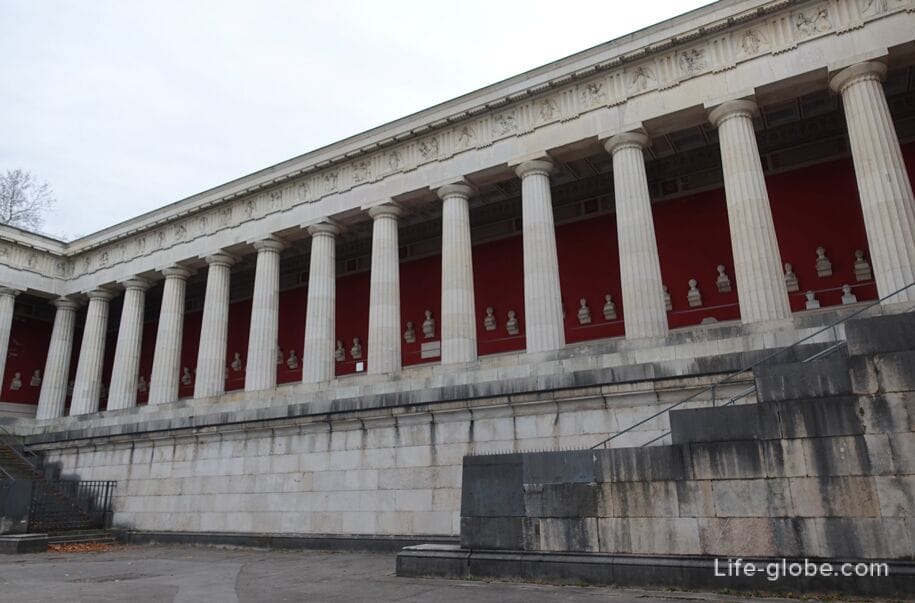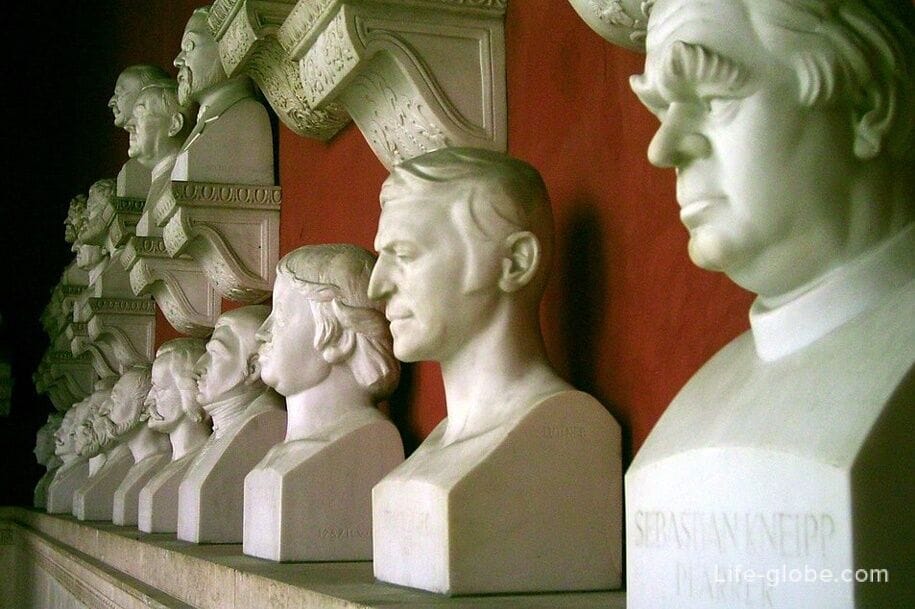
Statue of Bavaria and hall of fame "Ruhmeshalle" in Munich (Statue of Bavaria, Ruhmeshalle) constitute a set of objects, - ensemble, which is one of the most important attractions of the city.
Bavaria and hall of fame located near Theresienwiese (Oktoberfest / Theresienwiese), which, in turn, is a venue for different events and holidays: the most famous of which is the autumn beer festival Oktoberfest.
The address of objects: Theresienhoehe, 16 (Theresienhöhe 16). The best views of the statue of Bavaria and hall of fame behind the statue opens from Theresienwiese, the street, Matthias-Pschorr-Strasse (Matthias-Pschorr-Straße).
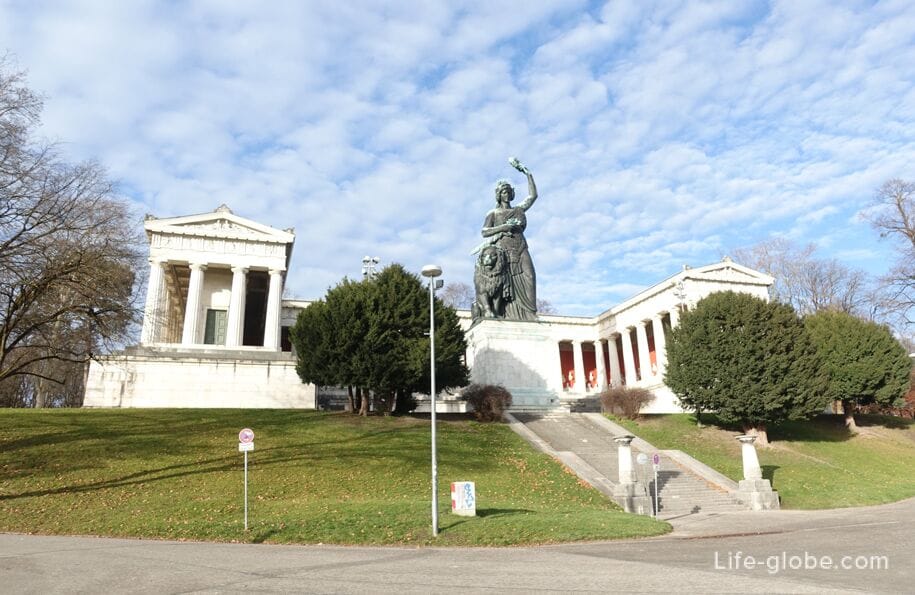
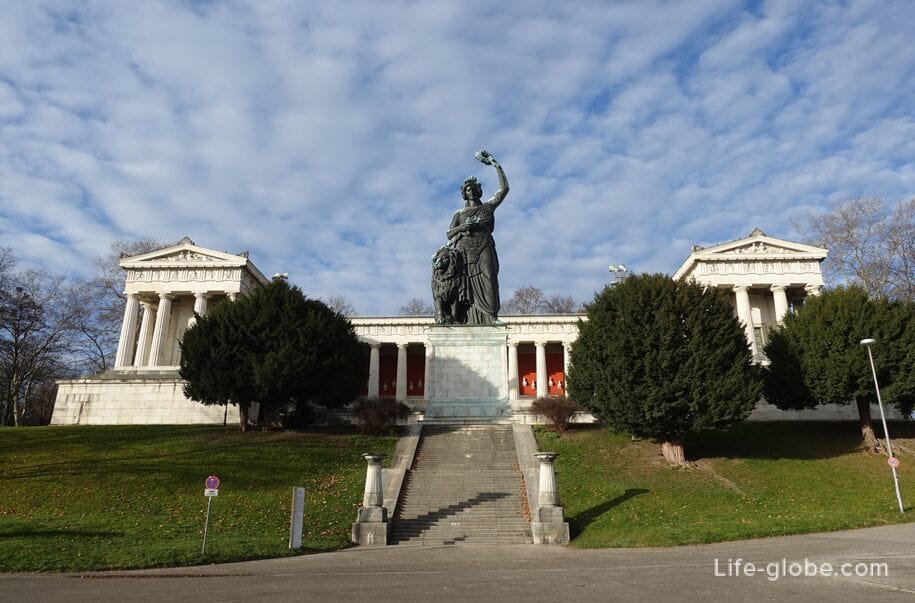
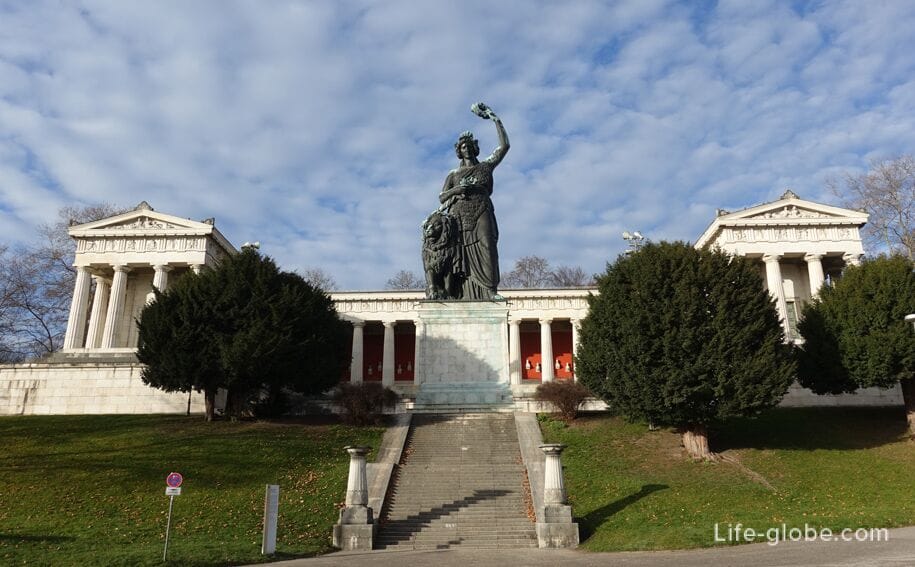
Statue of the Bavaria (Bavaria Statue), the monumental cast bronze statue, which in the female form embodies the Bavarian region (Federal land), and also his power and glory.
Bayern was commissioned by Ludwig I of Bavaria, with specific design, selected on a competitive basis. The statue was made from 1844 to 1850, designed by the Munich artist Ludwig Santanera and cast in the Munich foundry of J. B. Stiglmayer. Is the first colossal statue since antiquity and is composed entirely of cast bronze. In those days, and to this day, the statue of "Bavaria" is considered a technological masterpiece.
The statue rests on a high pedestal, with a height of 8.92 metres and which Theresienwiese leads to the sweeping staircase.
Bavaria is depicted standing with arms raised above the head with the left hand, which holds a wreath of intertwined oak leaves (oak, considered to be, in fact, the German tree). A wreath in the river of the statue also means an honorary award for all those whose busts are located in the hall of fame.
Shirt dress sculptures, floor-length with partial a bearskin, give the figure the appearance is a typical "German".
Folded in his right hand the statue holds a naked sword. And near the left part of the figure depicts a lion sitting up. The lion has always held a firm place in heraldry for the rulers of Bavaria. In addition, two rampant lion was placed in the Bavarian coat of arms since ancient times. However, it is also believed that lion next to the statue of Bavaria is perceived not only as the heraldic animal of Bavaria, but along with naked sword is a symbol of defensive capacity.
The height of the statue of Bavaria is of 18.52 meters, and its weight is about 87,36 tons.
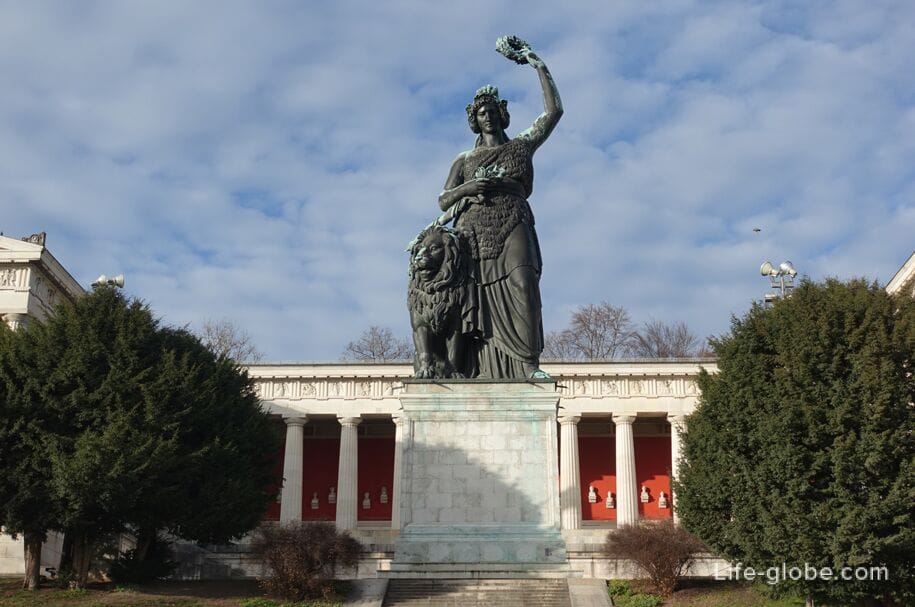
Today Bayern Munich is not only a symbol of worldly patron of the Free state, but also a place where there is an observation deck.
Internal spiral staircase, located in Bavaria, leads to the platform at the head of the statue, where through small openings overlooking the Theresienwiese and the surrounding area.
The observation deck is open to visitors from April to October 15. Opening hours: 09:00 am to 18:00 PM, in the days of the Oktoberfest at 20:00 o'clock in the evening.
In mind, Bayern are also two bronze seat up to 6 people.
Entrance to the observation deck in Bavaria through the door in the pedestal located on the back side of the statue.

Photo of the spiral staircase inside the statue
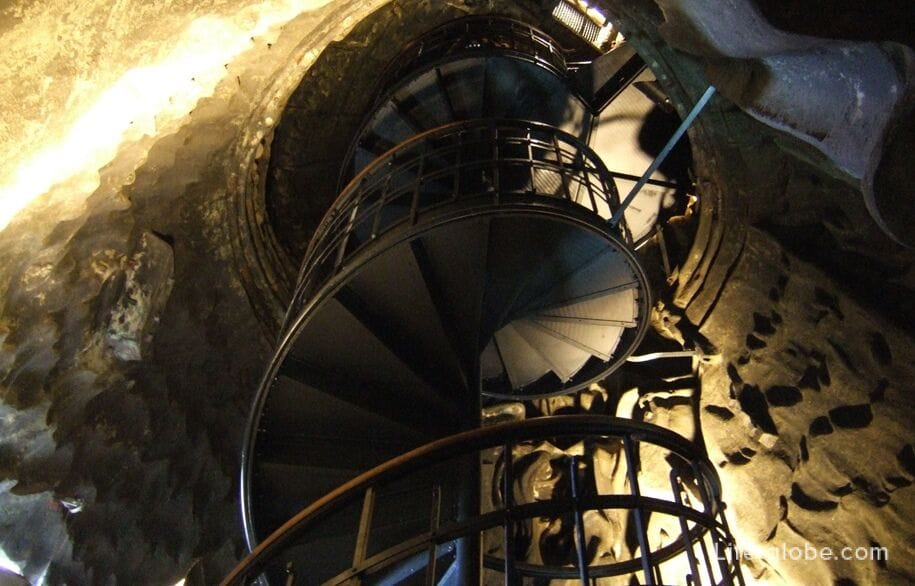
Photo of seats in bronze in the head of Bavaria

Hall of fame (Ruhmeshalle / mit Ruhmeshalle Bavaria) is a monumental structure which, like the statue of "Bavaria", was commissioned by king Ludwig I of Bavaria and built in the period from 1843 to 1853 by the architect Leo von Klenze.
The purpose of the construction was to honor the memory and glory of the great men of Bavaria.
Hall of fame has three wings, width of 68 meters and a depth of 32 meters. Structurally consists of a ledge height of 16 meters and stands on a slightly inclined base with a height of 4.3 meters. The roof is supported by 48 of the front pillars (height of 6.95 meters, a diameter of 1.25 meters), and a closed rear wall.
Thus the hall of fame is a gallery with busts of famous Bavarians of the past centuries, including a stone head writer Tom Ludwig, composer Carl Orff, artist Albrecht dürer and the brewer Joseph Pschorr.
